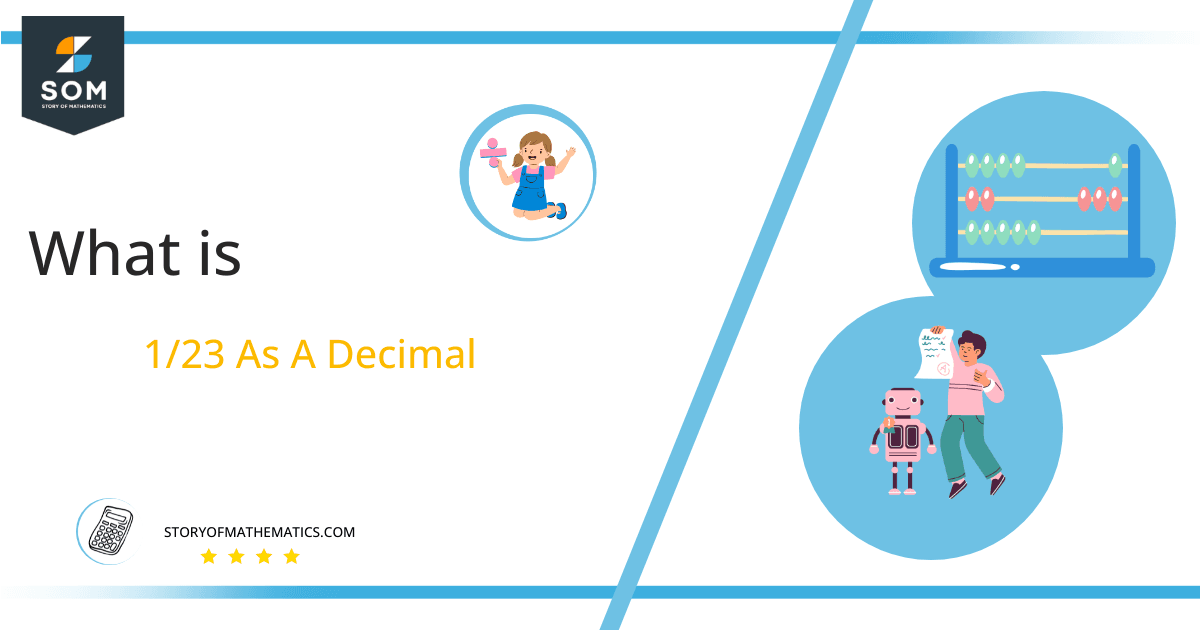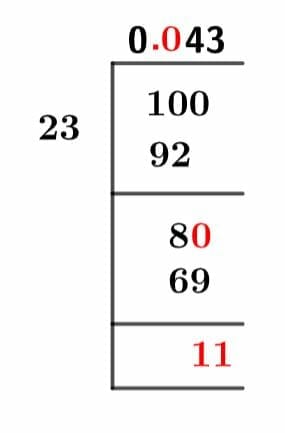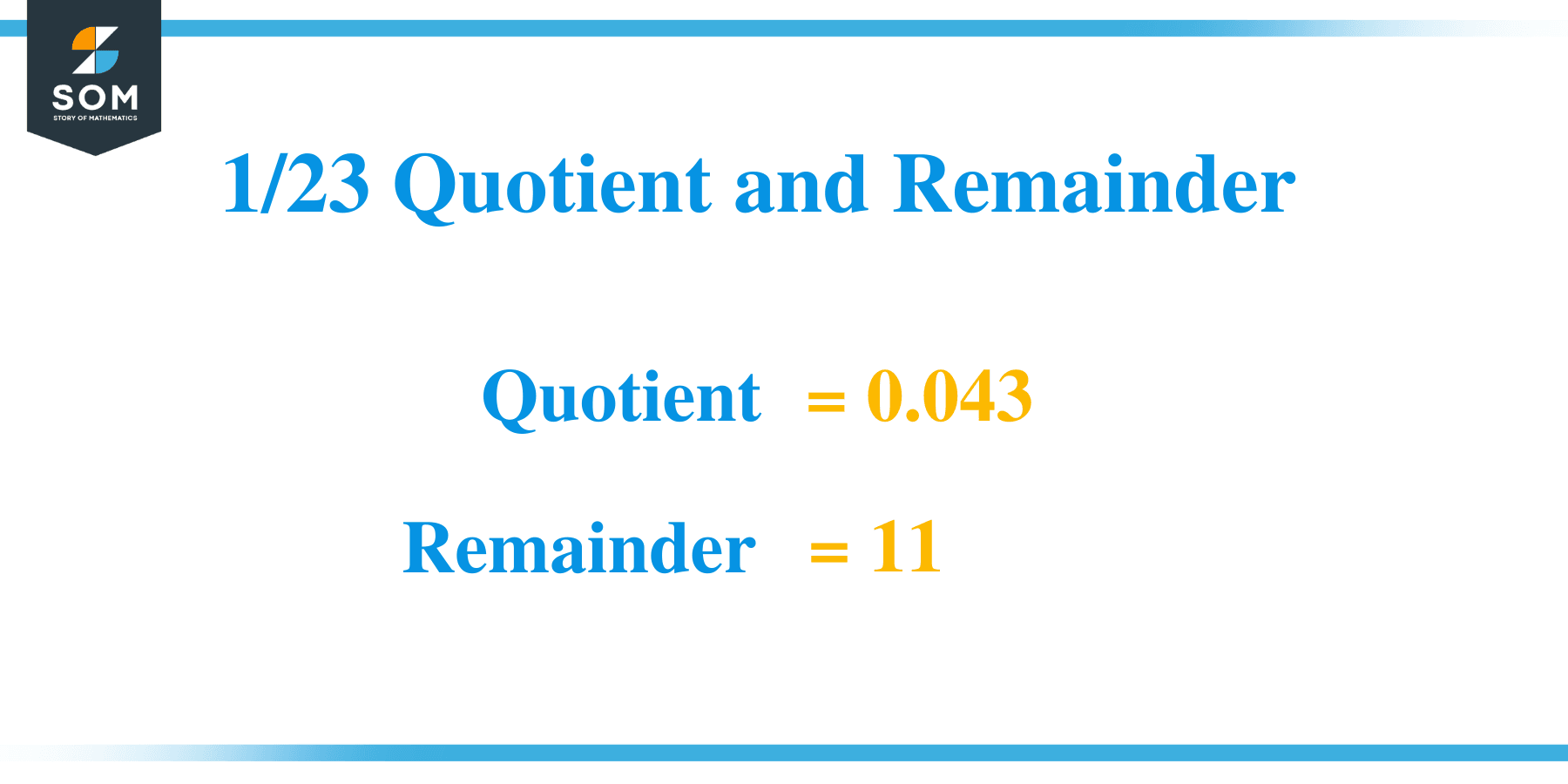What Is 1/23 as a Decimal + Solution With Free Steps
The fraction 1/23 as a decimal is equal to 0.043.
Fractions are used to define the portion of a whole thing. The fractional form can easily be converted to the decimal form. There are two types of fractions one is a proper fraction and the second is an improper fraction. The fraction 1/23 is a proper fraction because its denominator is greater than its numerator.
Here, we are more interested in the division types that result in a Decimal value, as this can be expressed as a Fraction. We see fractions as a way of showing two numbers having the operation of Division between them that result in a value that lies between two Integers.

Now, we introduce the method used to solve said fraction to decimal conversion, called Long Division, which we will discuss in detail moving forward. So, let’s go through the Solution of fraction 1/23.
Solution
First, we convert the fraction components, i.e., the numerator and the denominator, and transform them into the division constituents, i.e., the Dividend and the Divisor, respectively.
This can be done as follows:
Dividend = 1
Divisor = 23
Now, we introduce the most important quantity in our division process: the Quotient. The value represents the Solution to our division and can be expressed as having the following relationship with the Division constituents:
Quotient = Dividend $\div$ Divisor = 1 $\div$ 23
This is when we go through the Long Division solution to our problem. The following figure shows the solution for fraction 1/23.

Figure 1
1/23 Long Division Method
We start solving a problem using the Long Division Method by first taking apart the division’s components and comparing them. As we have 1 and 23, we can see how 1 is Smaller than 23, and to solve this division, we require that 1 be Bigger than 23.
This is done by multiplying the dividend by 10 and checking whether it is bigger than the divisor or not. If so, we calculate the Multiple of the divisor closest to the dividend and subtract it from the Dividend. This produces the Remainder, which we then use as the dividend later.
Since 1 when multiplied by 10 becomes 10 which is still smaller than 23. Therefore we will multiply 10 by 10 again and add a zero in the quotient after the decimal point. By doing this the dividend will become 100 which is bigger than 23 and hence divisible by 23.
Now, we begin solving for our dividend 100.
We take this 100 and divide it by 23; this can be done as follows:
100 $\div$ 23 $\approx$ 4
Where:
23 x 4 = 92
This will lead to the generation of a Remainder equal to 100 – 92 = 8. Now this means we have to repeat the process by Converting the 8 into 80 and solving for that:
80 $\div$ 23 $\approx$ 3
Where:
23 x 3 = 69
Finally, we have a Quotient generated after combining the three pieces of it as 0.043, with a Remainder equal to 11.

Images/mathematical drawings are created with GeoGebra.
